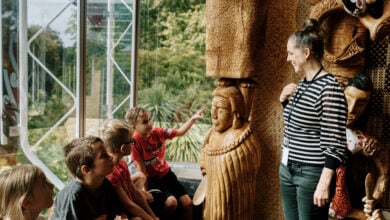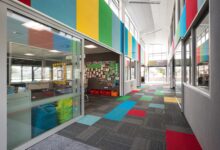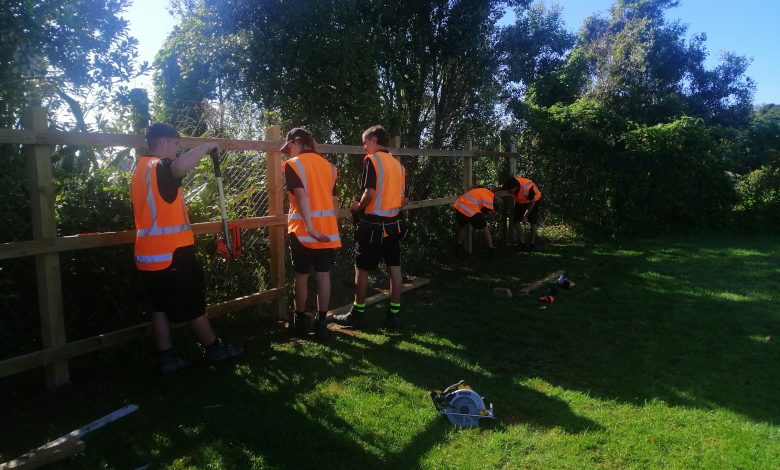
For some students, NCEA and other similar academic standards just aren’t meeting their needs. Happily, initiatives like Kamo High School’s Trades Academy are providing an engaging, rigorous, and highly acclaimed alternative.
Read the Term 3 edition of School News HERE
Down the back of Kamo High School or Te Kura Tuarua o Te Kamo – a mid-to-large secondary school in Whangārei – is a cheerful complex of prefabricated classrooms and a large workshop space set amidst a few plots of vegetable and herb gardens.
Once housing the agriculture programme, the space is out of the way of the main school. Walking through the grounds toward it, the crowds of teenagers begin to thin out. As you approach the side of the workshop, a brightly painted sign reading “Trades” becomes visible. As I would later learn, everything from the concrete paths to timber ramps, corrugated fencing, and wooden picnic tables around the site was evidence of the busy students at work here.
This is the site of the Kamo High School Trades Academy. Each year, forty or so students – compared to the main school’s 700 to 800 – come to learn construction. The academy teaches using the BCITO (Building Construction Industry Training Organisation) standards at NCEA Level 2 and 3.
At Level 1, ākonga gain standard NCEA Literacy and Numeracy qualifications in addition to their building and construction standards. At the academy, students also gain work experience, and can participate in externally taught courses such as Health and Safety, First Aid and Driver Licensing.
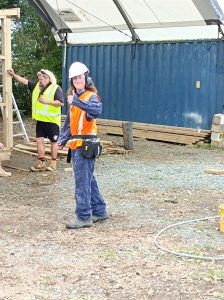
The programme at Kamo High School is part of the wider Te Tai Tokerau Trades Academy, which helps run trades programmes in many high schools around Northland. The initiative has seen widespread success, and garnered praise for providing – and raising the profile of – an alternate pathway to the traditional academic route.
At Te Kura Tuarua o Te Kamo, the Trades Academy is facilitated by Adrian Moyle, an overseen by Janelle McKenzie, who is Head of Department. Both are passionate about the trades programme, and proud of the students and the work that comes out of it. For Moyle, who had his start in the tertiary training space, taking on the Kamo High Trades Academy programme was about building strong, confident students who could find their feet in the trades after graduation.
“Our goal is to help our students build a strong work ethic,” said Moyle. “When they leave here, the objective is that they hit the ground running. I want a place for tradesmen to come and say: ‘do you have any top students that would make excellent apprentices?’”
As Moyle leads me outside to show me the students’ current projects, it’s clear that there are more than a few excellent students in the Trades Academy. He begins with a tour of some partially constructed cabins. Everything is done by the students, Moyle explains, even running the wires and installing insulation. Of course, Moyle and other qualified tradespeople supervise and sign off on the work. During the year or on completion of the project, the cabins are sold, and the money is put into materials and costs for next year’s students. The school also receives donations such as timber, and where possible makes use of recycled components. This year, some of the cabins are using windows reclaimed from a recently demolished school.
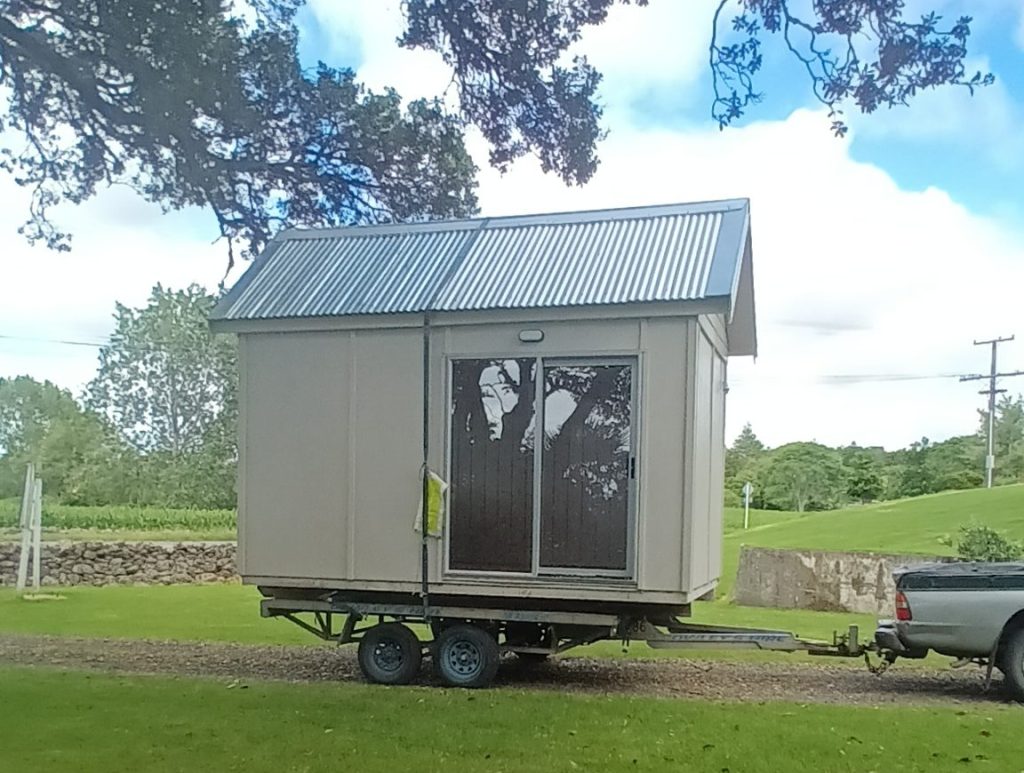
In the past, completed projects have gone to members of the community who have bid on them, and one was donated to the Railway Club at the Maunu Museum as a tearoom. The projects, then, aren’t just a way of getting students to meet the NCEA standards, they’re also a form of community service.
“That sense of giving back is something they take a lot of pride in,” said McKenzie.
Beside two partially erected cabins, a group of Year 13 students are working on the flooring of a third cabin. Moyle briefly pauses to comment on their work – he suggests the group adjusts their measurements to leave a layer of air between the floor and the underfloor insulation. One female student lights up. “I told you guys!” she exclaims.
Later, Moyle notes that he believes Kamo Trades Academy can provide particular benefit to women looking to get into trades. “It’s nice to give them a start here, in an environment that can be regulated so it’s safe for them,” said Moyle.
“By and large, the female students have really benefitted. One became a builder, and that’s nice to see. Even the young men that later go on to be builders, there’s a certain glow about them,” Moyle says, taking on a glow himself.
“I didn’t have this opportunity when I was younger,” says Moyle. “If I had my time again, I’d like an opportunity like this.”
Moyle admits that he was never very good at traditional academic subjects. But when he began trades school, Moyle says that his grades went up significantly, and with that increase came a corresponding increase in self-esteem. Now, having been in the trades for decades, Moyle wants to pass on that feeling of satisfaction and pride to his students.
“Instead of building houses, I can help build people, personalities, and abilities and skills and pass it on.”
At the school, although the subject at hand is construction, Moyle says the soft skills students learn serve them well in all manner of future careers. Although some go on to become builders, others become electricians and plumbers. Others use their skills in other fields outside of trades altogether.
Moyle himself worked as a mechanic for a period after years in the building industry, applying the critical thinking he had learnt as a builder to the task of converting cars from right- to left-hand drives. Now, Moyle applies those principles of flexible thinking and key skills to the programme at the Trades Academy. Building and construction is particularly suited to teaching these kinds of soft skills because the industry is so varied, said Moyle.
“Every job is different. You have to think in principles rather than laws, and you’ve got to be thinking all the time and thinking ahead.”
When the students first come into the trade school in Year 11, Moyle and his colleagues start building their practical skills. That means hands-on small projects which help build muscle memory and hand-skills. In the latter half of the year, the students are introduced to power tools.
At Year 12, students begin more in-depth courses, undertaking complex projects like cabinets, decks, mixing concrete and building fences. Moyle said the aim is to apply the skills they learnt in previous years in different applications. Finally, the Year 13s undertake a programme that is “like a university course,” said Moyle.
In their final year, students take on a larger project from start to finish – design, quantities, and pricing. When design issues come up, students have to problem solve, record their changes and present their final project.
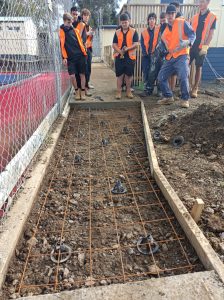
As evident from the design of the Year 13 course, the Trades Academy is also an academically rigorous course, though the students might not view it that way, Moyle said with a smile.
Recently, a group of students constructed an accessibility ramp on the school site. That project involved mixing and pouring reinforced concrete. That requires chemical and material knowledge and an understanding of ratios, noted Moyle.
Additionally, designing the ramp to New Zealand building code meant understanding angles – building standards in New Zealand and Australia dictate accessibility ramps should have a slope of 1:14. For every metre of height, the ramp must extend 14 metres horizontally. And it’s not just math – it’s a practical application of physics theory, too. Finally, the students had to build around existing staircases, creating late additions to the project such as a platform to join the ramp to existing steps.
In the one project then, students synthesise math, physics and chemistry knowledge, as well as using logic and problem-solving skills.
In the past, Moyle said that the Trades Academy was treated as a sort of “dumping ground” for students who might not succeed in mainstream school. There was an impression that the Trades Academy wasn’t academically rigorous or that it would be an “easy” year.
But that’s not the case at all, said Moyle. Getting into the trades school involves an application and an interview, though McKenzie said that students who’d like to attend on a trial basis are welcomed too. The goal is to ensure that students who come to the Trades Academy want to be there. As Moyle puts it, that “creates an environment where students can bloom.”
“A lot of the students used to think of [the Trades Academy] as a soft option,” adds McKenzie. “But it’s not. It’s work – we’re getting them ready for the big wide world out there. And by the time they leave, and they’ve done their work placements, the skills they learn are quite amazing.”
Ultimately, the teachers at Kamo High School Trades Academy want to see their students thrive and succeed. The relatively small class size and hands-on nature of the course goes some way toward achieving that goal, note McKenzie and Moyle. For McKenzie, “it’s not just the desire to get the students through the standards, it’s making connections with them and knowing who they are.
“They’re in this little environment down here which is still part of the school, but different. It’s a good place to be.”




